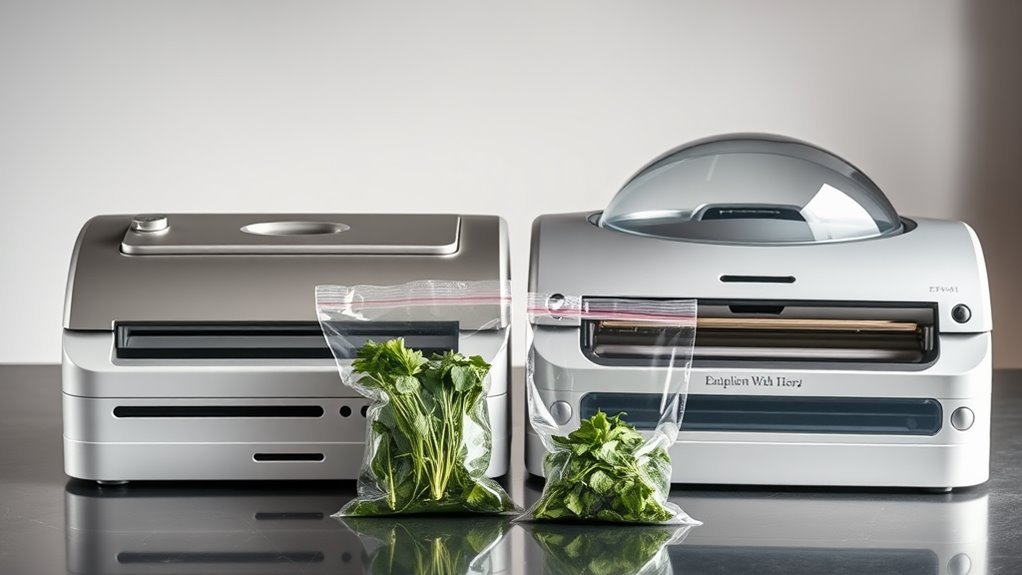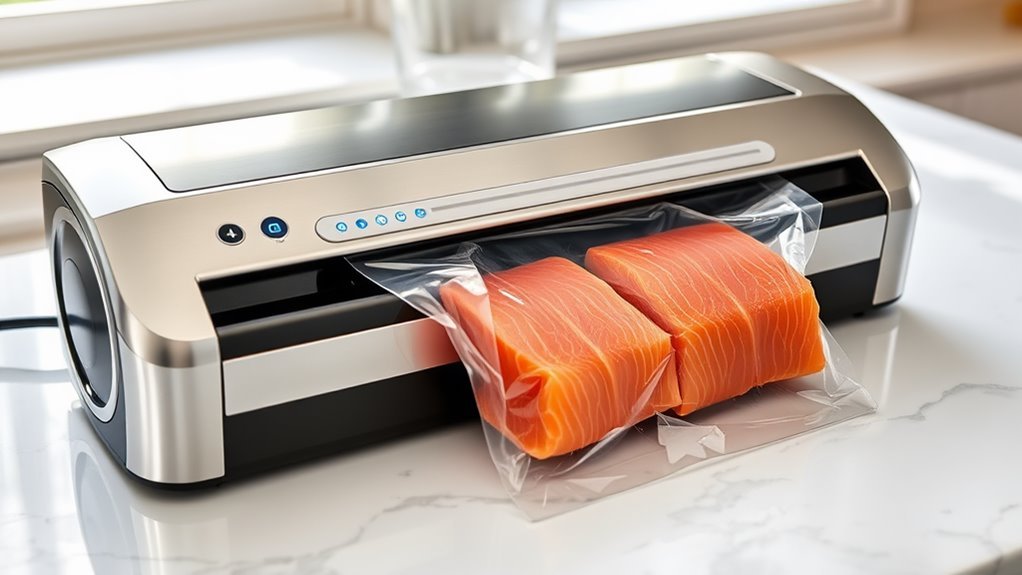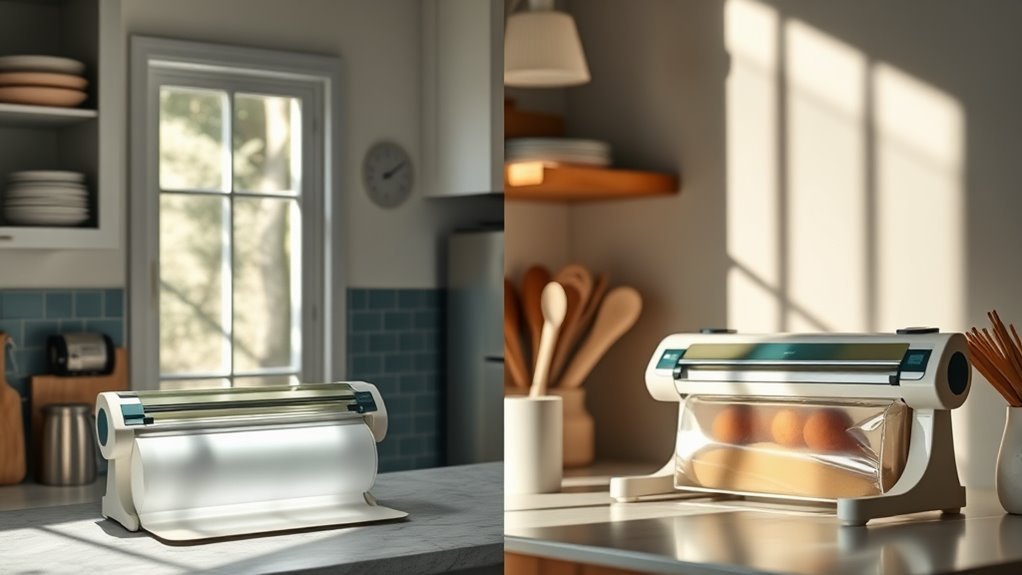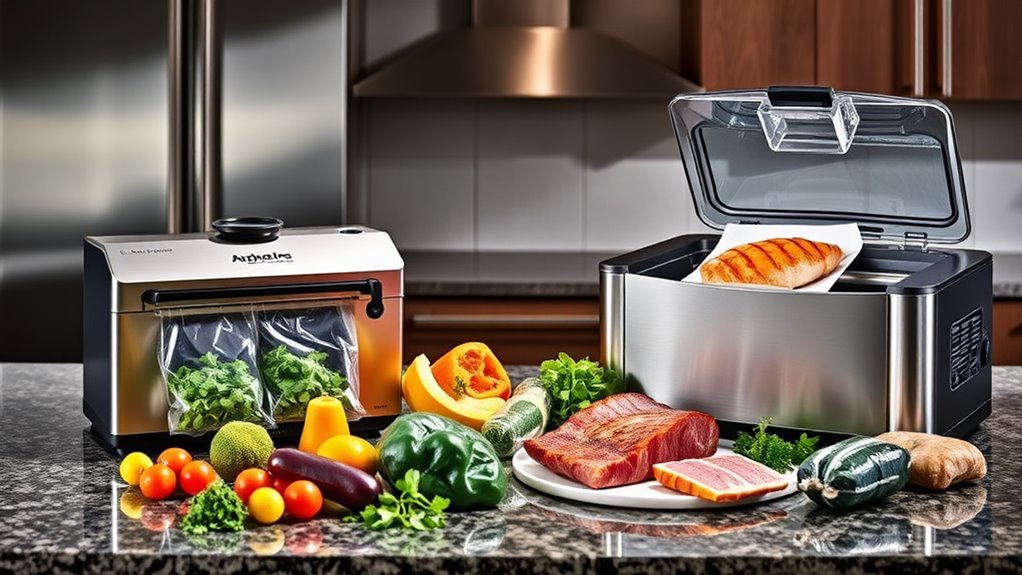Embark on a journey of culinary efficiency with our Vacuum Sealers showcase: Suction vs. Chamber Models – Your Ultimate Guide
Step into the world of enhanced food preservation as we delve into the two leading vacuum sealing technologies—suction and chamber vacuum sealers. Each model, much akin to the niche gadgets in a professional barista's arsenal, serves a distinct purpose. Rigorous evaluation and practical implementation have highlighted their core differences.
The landscape of vacuum sealing has matured, presenting unique advantages for home gourmets and culinary experts alike. Suction sealers boast edge-centric mechanisms that siphon air via textured pouches. Chamber variants, however, encapsulate foods within a vacuumed haven.
Insights from experts in food longevity and industry-centric research point to both systems’ efficacy in extending food freshness. Yet, their deployment is influenced by various nuances:
- Demands for storage capacity
- The diversity of foods being stored
- Countertop space availability
- Budgetary constraints
- Usage regularity
- Proficiency in liquid preservation
Culinary professionals might gravitate towards chamber sealers for their durability and finesse with liquids, whereas home enthusiasts may prefer suction devices for their simplicity and modest footprint. Discerning these key distinctions will steer you to an astute investment in your food-saving arsenal.
Demystifying Vacuum Sealing Techniques

Join me as I unwrap the secrets of achieving that coveted airtight seal using innovative food sealer technologies.
An intriguing contrast lies at the heart of it all: Suction vacuum sealers evacuate the air directly from the bag, whereas chamber vacuum sealers curate a void within their confines.
I'm always amazed at how chamber machines uniformly equalize air pressure, permitting the meticulous encasement of both arid and liquid provisions.
Chamber sealing aficionados can rejoice at the lack of necessity for specialized pouches – everyday standard vacuum bags fit the bill just right.
On the flip side, suction sealers match up best with sturdy foods and require specific embossed bags. Heightening your understanding of the vacuum sealer spectrum will guide you in picking the perfect fit for your culinary conservation.
The Mastery Behind Chamber Vacuum Sealers
The magic behind chamber vacuum sealers is truly mesmerizing, echoing my love for the exquisite symmetry of coffee crema.
In the essence of these devices, air is purged not just from the bag but the entirety of the chamber. Aspiring baristas will appreciate the equilibrium this creates, allowing for a spill-free sealing experience, even with the most unyielding of broths.
What captures my passion is their adaptability. A chamber sealer doesn't discriminate; it flawlessly forges an airtight enclosure, befitting of a domestic setting. Their dual-action prowess is a boon for liquid-laden foods.
The icing on the cake? There’s no dependence on textured bags – regular vacuum pouches suffice, enabling you to dabble in advanced culinary skills like infusion and sous vide cooking.
A Look Inside How Suction Vacuum Sealers Work

What sets suction vacuum sealers apart is their tactile, user-friendly approach, a trait that resonates with my love for the accessibility of a good espresso shot. These external devices pull air out using bags equipped with fine ridges.
The simplicity is enthralling – just place the bag's open end inside the device, and it orchestrates the air evacuation through the channels.
Attributes that make these sealers shine include:
- Compactness and portability, ideal for cozy kitchen settings
- Compatibility with distinctively lined bags crafted for optimal air extraction
- Affordability, generally falling within the $100-$150 range
Even though their prowess might not be on par with chamber alternatives, the balance of function and convenience offered by suction vacuum sealers is truly indispensable for domestic culinary artists. Their potent suction capabilities are also instrumental in ensuring liquidity retention and freshness conservation.
Bag Varieties and Matching Sealers
Selecting the optimal vacuum sealer bag can turn the tide in your food storage ventures. Just as I select coffee beans, I find that chamber vacuum sealers are the perfect partners for smooth, transparent chamber pouches, whereas suction sealers necessitate bags with internal structures to facilitate air expulsion.
The allure here is that chamber bags are typically more conservational concerning plastic use and are resealable for dehydrated provisions, ultimately leading to economic gains. Furthermore, appropriate bag choice amplifies vacuum sealing merits, keeping provisions fresher for extended durations.
The jack-of-all-trades in bag versatility turns out to be the suction sealer, capable of accommodating a multitude of sealer bags, textured ones included.
Yet, for the liquid aficionados, chamber sealers carve their niche – designed specifically to deal with moist ingredients with finesse and uniformity of sealing efficacy.
Cost-Benefit Analysis: Immediate Spend vs. Long-Term Value

Finding the right vacuum sealer investment parallels the crucial decision between a single-origin brew and a blended roast, hinging largely on your longevity plans for food storage.
Suction sealers lure you with their immediate affordability at $100-$150, yet a closer look at the economic implications might reveal a different narrative for lasting value.
With an initial outlay surpassing $600, chamber sealers could secure your pocket's favor over time.
Here's my fiscal epiphany:
- Suction sealers entail costly ongoing expenses with their unique disposable bags.
- Chamber models capitalize on economical, reusable pouches that mitigate the steep entry cost.
- Devotees of high-frequency usage accrue savings swiftly thanks to the chamber sealers' swift operation and adeptness with fluids.
To my delight, the prolonged preservation provided by chamber systems could translate to considerable savings on food waste and associated expenses.
If preserving culinary creations is your passion, glance beyond the initial investment.
The productivity and flexibility of chamber vacuum sealers ultimately vindicate the heftier upfront commitment with their promise of long-term frugality.
Optimal Sealer Deployments Based on Your Needs
The merits of vacuum sealers extend beyond mere financials, aligning with your most common sealing tasks.
For those with daily preservation needs of dry staples or leftover delights, my nod goes to suction vacuum sealers – the heroes of short-term storage.
Conversely, if your endeavors tip towards saucy concoctions or demands fit for trade, chamber vacuum sealers step up to the plate.
Their prowess at preserving a cornucopia of foodstuffs without spillage is unrivaled. A staple in professional kitchens, these machines prove their worth in bulk processing and excellently complement sous vide aspirations, safeguarding the savor of even the most fragile treats.
They also excel at delicate item protection, broadening your horizons for advanced food safeguarding processes.
Zeroing in on the Perfect Sealer for Your Culinary Realm

As you weigh the options between suction and chamber vacuum sealers, let me clear the steam and lead you to your ideal culinary companion.
Reflect upon what resonates with your unique food preservation desires:
- Should you be a domestic chef seeking cost-effective solutions, with rare dealings in liquids, a suction vacuum sealer at $100 is your ally.
- For the commercial maestro or avid liquid food lover, make the leap to a chamber vacuum sealer. Its higher ticket is a testament to its seasoned capabilities.
- Keeping bag specifications in mind is also key – suction devices require mesh-lined bags for optimal performance, while chamber models are more forgiving, compatible with a variety of chamber pouches.
My recommendation? Beginning preservationists will embrace suction sealers as a prime choice for most home kitchens.
But for those with a penchant for mass storage and bulk food longevity, investing in a chamber sealer is a sage decision.
In Summary
Whether you opt for a manual pour-over or a high-end espresso machine, your decision echoes the vacuum sealer selection conundrum: align it with your specific requirements and financial plan. Whether you decide on the ease of suction or the comprehensive abilities of chamber sealing, you are paving your way towards a revolution in your kitchen routine.
The post What’s the Difference: Suction Vs Chamber Vacuum Sealers?** appeared first on Vacuum Sealer Center.
```